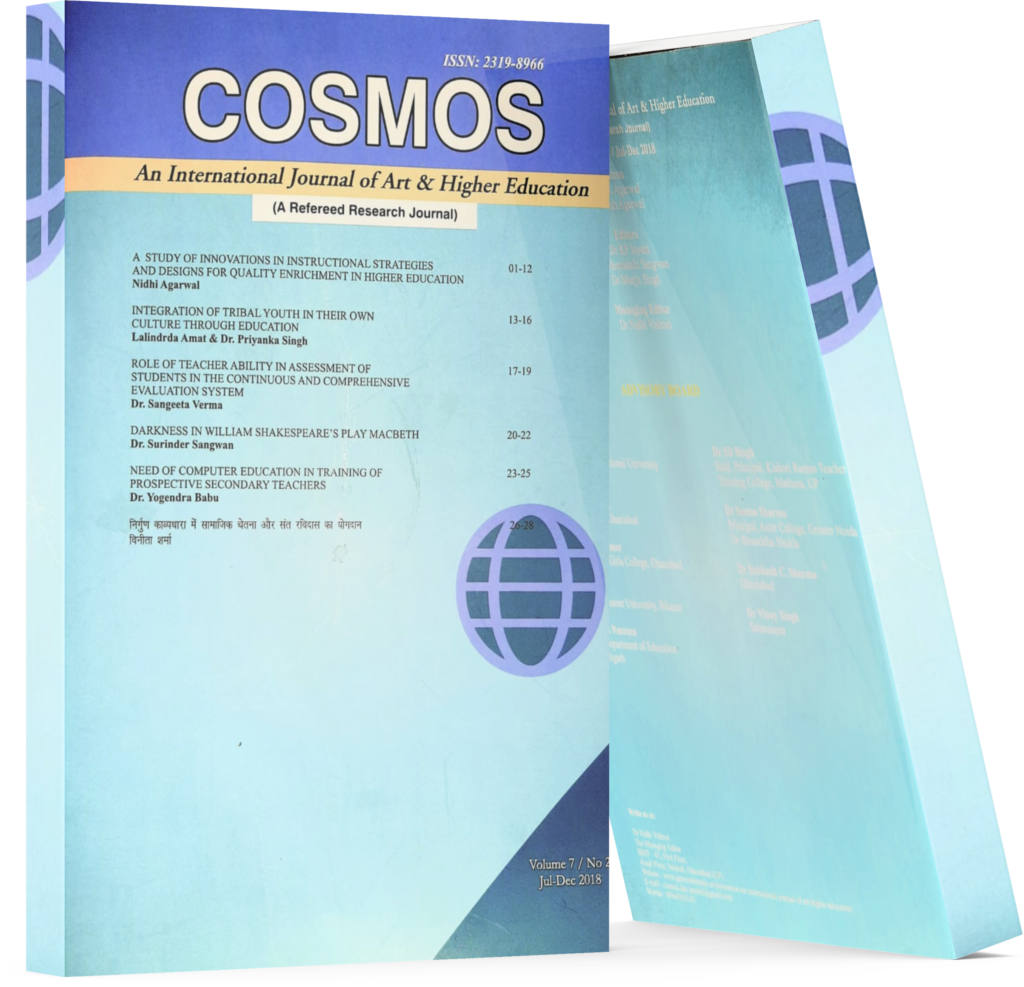Accessible Tourism Experiences In Restaurants: The Case Of Persons With Disabilities Residing In Bulacan
Keywords:
PWDs, Accessibility, Physical Disability,, Sensory Disability, Intellectual Disability,, Restaurant, Tourism, Visual, Hearing, Speech.Abstract
The fundamental frame of responsible and sustainable tourism called the Global Code of Ethics for Tourism of the United Nations World Tourism Organization stipulates that everyone who engages in tourism activities should be free to exercise their rights to enjoy themselves without the possibility of experiencing various hindrances. This is a global framework essential for the responsible and sustainable growth of the sector highlighted in Article 7. To assist persons with specific requirements related to physical, sensory, and intellectual disabilities to live, act, and function independently, every tourist service provider should have accessible facilities that go beyond conventional design. Consequently, this study aimed to assess the restaurant facilities in Bulacan that focus on the experiences of persons with disabilities. This research could be valuable, especially to food and beverage businesses, as this will give them information that would leverage their facilities to cater to the needs of PWDs. The researchers used quantitative and descriptive methods and techniques to describe whether the restaurants in the province of Bulacan are PWD-friendly. This research was demarcated to the PWDs of Bulacan who have sensory, physical, and intellectual disabilities, and they were chosen using purposive and convenience sampling. A total of 171 PWD respondents took part in answering survey questionnaires containing questions based on a 5-point Likert scale. The results showed that most of the restaurant facilities in Bulacan are accessible for disabled persons and are considered PWD-friendly for persons with sight (visual), hearing, speaking (speech), physical, and intellectual disabilities. However, the study recommends having further research to improve accessible facilities for the restaurants.
Downloads
References
Amer, Tamer, (2008). “Assessing food service facilities for disabled guests in some Cairo's hotels and restaurants”. 7, 56-68.
Anous, D.I., (2015). “The impact of Interior Design in educational spaces for children with Autism.”
Autism Speaks Organization, (n.d.). “Hosting an Autism-Friendly Event: RESTAURANT”, Retrieved from
https://www.autismspeaks.org/sites/default/file s/Autism_Friendly_Restaurant.pdf
Baker, S. M., & Kaufman-Scarborough, C., (2001). “Marketing and public accommodation: A retrospective on Title III of the Americans with Disabilities Act”. Journal of Public Policy & Marketing, 20(2), 297-304.
Bulacan. (n.d.). “PhilAtlas”,
https://www.philatlas.com/luzon/r03/bulacan.h tml
Carroll, C. and Guinan, N., et. al., (2018). “Social participation for people with communication disability in coffee shops and restaurants is a human right”. Taylor & Francis Online: Peer-reviewed Journals.
https://www.tandfonline.com/doi/pdf/10.1080/ 17549507.2018.1397748
Chia-Hsin, C., (2020). “The Satisfaction Study of People with Disabilities Regarding the Restaurant with Barrier-Free Environment in Taiwan Tourism Area”. International Business Research, 13(4), 1-1.
DeJong, G. and Lifchez, R., (1983). “APA PsycNet”, https://psycnet.apa.org/record/1984- 09280-001.
Faria, M.D., Silva, J.F. and Ferreira, J.B., (2017). “Transformative consumer research and the visually impaired: A study on restaurant services”. Consumer Behavior Review, 1(Special Edition) 1-15.
Freeman, A., (2015). “Access to tourism facilities by persons with disabilities in The accra metropolis”. Uccir home. https://ir.ucc.edu.gh/xmlui/bitstream/handle/12
/4119/FREEMAN%2c%202015.pdf?s equence=1&isAllowed=y
Ghasemi, V., Oliveira, M.G. & Kuhzady, S., (2022). “Marketing Mix Analysis for Dote Restaurants in Portugal”. International Case Studies in Tourism Marketing, 218.
Huang, D. & Rosenberg, D., et. al., (2012). “Food access patterns and barriers among midlife and older adults with mobility disabilities”. Publishing Open Access Research Journals & Papers, Hindawi. https://www.hindawi.com/journals/jar/2012/23
/
Ibraimi, F., (2021). “Design Methods and Suggestions for Autistic-Friendly Spaces”. Knowledge International Journal, 48(4), 715- 721. Retrieved from http://ikm.mk/ojs/ index.php/KIJ/article/view/5556
Jasim, Rand, (2020). “The influence of interior design on children with autism and learning disabilities”. 10.13140/RG.2.2.15452.13447.
Jones, L., (2018). “Designing a Public Bathroom for Ease of Navigation”. Vision Aware. https://visionaware.org/blog/visually impaired-now-what/designing-a-public bathroom-for-ease-of-navigation/
Julius, J., Gungat, L. and Tukiman, I., (2022). “The implementation of inclusive design for public buildings in Kota Kinabalu, Sabah”. In IOP Conference Series: Materials Science and Engineering, 1229(1), 012006, IOP Publishing.
Kaufman-Scarborough, C. & Baker, S.M., (2005). “Do people with disabilities believe the ADA has served their consumer interests?”, Wiley Online Library.
https://onlinelibrary.wiley.com/doi/abs/10.111 1/j.1745-6606.2005.00001.x
Kołodziejczak, A., (2019). “Information as a Factor of the Development of Accessible Tourism for People with Disabilities”. Quaestiones Geographicae, 38(2), 67-73.
Lam, K.L., Chan, C.S. & Peters, M., (2020). “Understanding technological contributions to accessible tourism from the perspective of destination design for visually impaired visitors in Hong Kong”. Journal of Destination Marketing & Management, 17, 100434.
Linderová, I. and Janeček, P., (2017). “Accessible tourism for all - current state in the Czech business and non-business environment”. E+M Ekonomie a Management, 20(4), 168-186.
https://doi.org/10.15240/tul/001/2017-4-012 21. Maráková, V., Dyr, T. &Wolak-Tuzimek, A., (2016). “Factors of tourism’s competitiveness
in the European union countries”, Research Gate.
https://www.researchgate.net/publication/3090 73385_Factors_of_tourism's_competitiveness_ in_the_European_union_countries
Moura, A. and Kastenholz, E., (2010). “Accessible Tourism Management: enhancing quality of life of people with disabilities”, In Proceedings of the International Conference on Tourism - Heritage and Innovation 2010, ISCET. Porto.
McLeod, R., (2019). “Deaf and Hard of Hearing Accessibility at Drive-Through Restaurants.” 24. National Council on Disability Affairs. “IRR of Batas Pambansa 344”,
https://www.ncda.gov.ph/disability
laws/implementing-rules-and-regulations irr/irr-of-bp-344/
Pehlivanoğlu, B., (2019). “Hotel Adaptation for Travelers with Disabilities (TWD): A Design Oriented Analysis”. Online Journal of Art and Design, 7(5).
Schnitta, B., (2016). “Residential Quietude, the top luxury requirement”. Acoustics Today, 12(3), 49-56.
Shetty, E., (2020). “Analysing the rhetoric of accessibility: How well do New Zealand’s hotel restaurants meet the needs of customers with disabilities?”, [Master's Thesis].
https://openrepository.aut.ac.nz/bitstream/hand le/10292/13848/ShettyE.pdf?sequence=3&isAl lowed=y&fbclid=IwAR2tw1MC6QWBCQEH cztrt8Wmj0NTPrk1LXrKlJgTkc6RXXY95Ltj
UF5rI
Takayanagi T. and Yamamoto M., (2019). “The Use of Service Dogs for People with Physical Disabilities in Japan in Accordance with the Act on Assistance Dogs for Physically Disabled Persons”. Front. Vet. Sci. 6:198. doi: 10.3389/fvets.2019.00198
Tomej, K. & Xiang, Z., (2020). “Affordances for tourism service design”. Annals of Tourism Research, 85, 103029.
UNWTO, (2016). “Accessible Tourism”, https://www.unwto.org/accessibility?fbclid =IwAR1_2JhYml94rhGbe0kz__3bPxYWaqtS KSu-oSB5bnPNFtfYKPCjI2jBpHY
UNWTO, (2016). “Manual on accessible tourism for all: principles, tools and best practices module I: accessible tourism - definition and context”, available at:
http://www.eunwto.org/doi/pdf/10.18111/9789 284418077.

